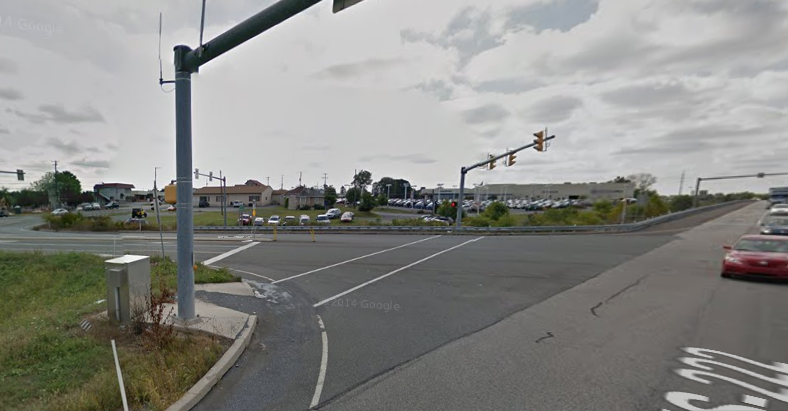In this article Charles Marohn outlines the problem with the otherwise well intentioned Americans with Disabilities Act (ADA). The requirements when regulated and applied in a clumsy top down fashion leave little wiggle room for smarter more cost effective approaches. This “orderly but dumb” approach often results in forcing ADA compliant facilities literally in the middle of nowhere but leaves downtowns, town centers and other multi modal corridors neglected.
A local example? Throwing money away on walking facilities on the Rt. 222 bypass. I am a big supporter of multi-modal streets and sidewalk facilities as a long term value play for communities. Problem is obviously, the bypass is a place no sane person whether disabled or otherwise would (or should) ever walk. It’s fundamentally designed as an un-safe place for pedestrians. And it should be as a road designed (albeit poorly) to get cars through an area from point A-B quickly and efficiently.
Rt. 222 Corridor – streets, stroads and roads.
But here we have the expensive pedestrian facilities to cross a 4-lane divided highway. The result of clumsy top down policy leaving no room for nuance or interpretation in line with local land use goals.
The problem:
“Like any top-down regulation, a lot of times [the ADA] gets boiled down to checklists and bureaucratic regulation,” Marohn told me. “There are a lot of times when MnDOT has standards about how a signal will go in. It will detail all the ADA elements, the lowered curb, the rumble strip, the different things for people with vision impairments. It’ll have all this stuff and they’ll go out and build it, but it’s out in the middle of a cornfield where there’s nobody walking anywhere.”
And the logical advice:
“While it’s easy to find places where ADA improvements seem silly, figuring out what to do about them can be difficult. One of Marohn’s key pieces of advice is that transportation engineers should spend more time listening to people with disabilities about what they want, and where they want it, instead of blindly following a top-down checklist. ”
25 years after the ADA, sidewalks still speak louder than words
First if ADA is going to mandate the curb cuts etc it should also require and make sure they go somewhere. And second roads need to be defined by contextual purpose. Let’s NOT put walking facilities on 4 lane divided highways. Let’s focus the money where we get the most bang for the buck. Where walkers are in danger today. Lastly, not building #dangerous by design roadways from the get-go is a much cheaper strategy then applying lipstick on a pig.
More information:

